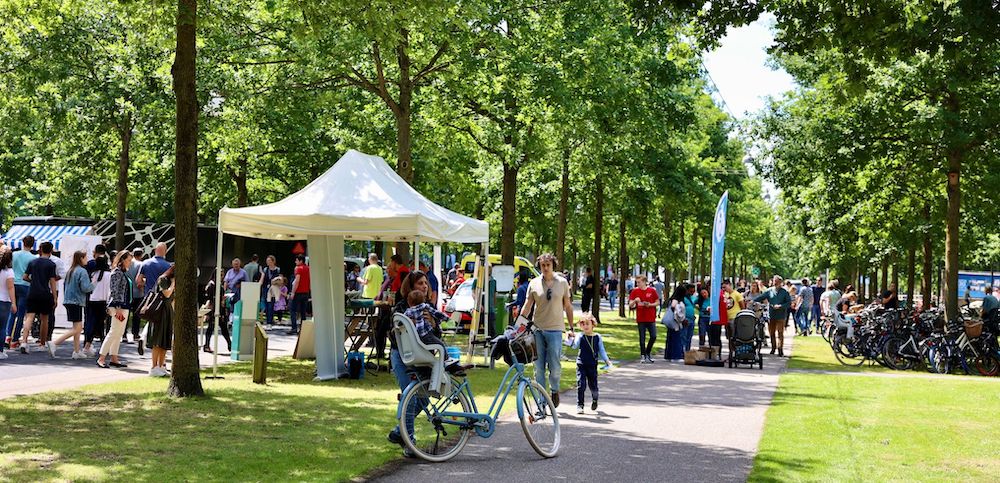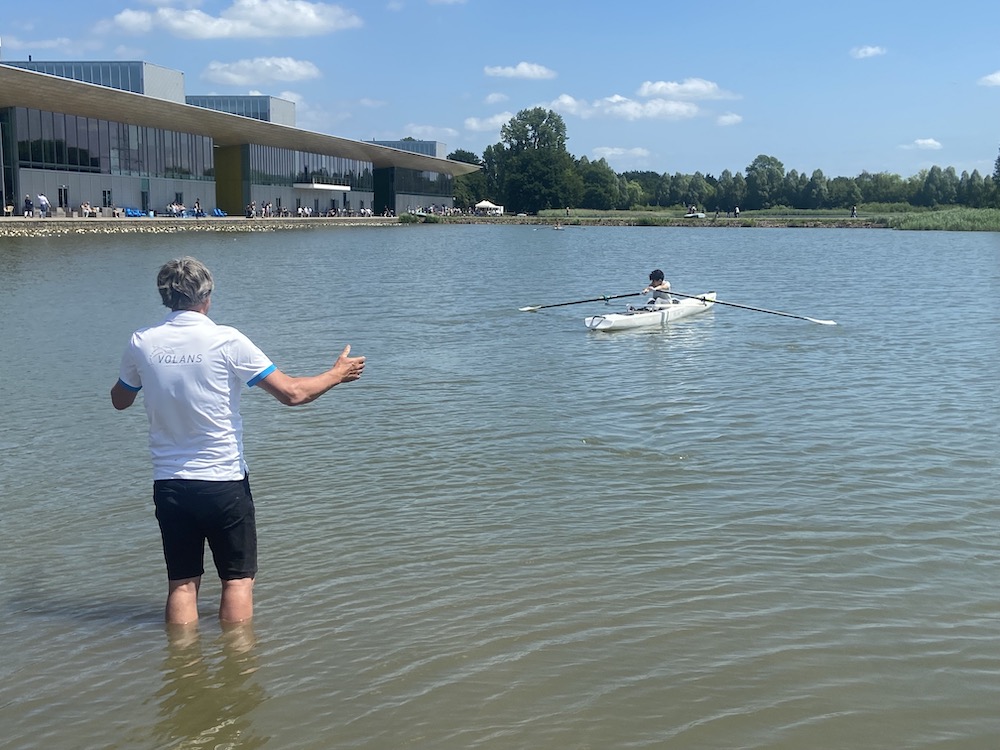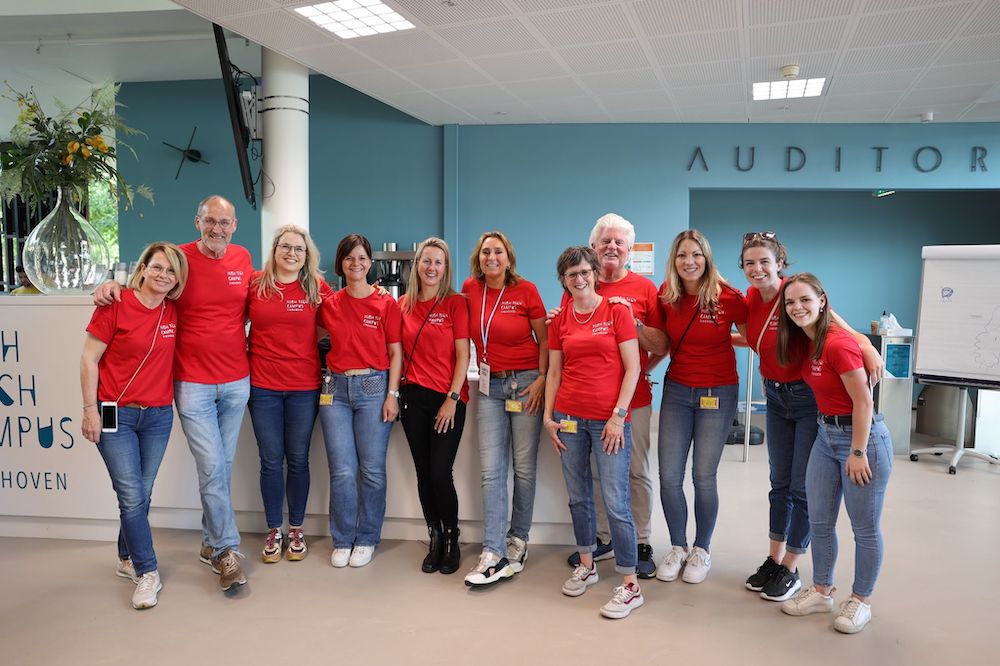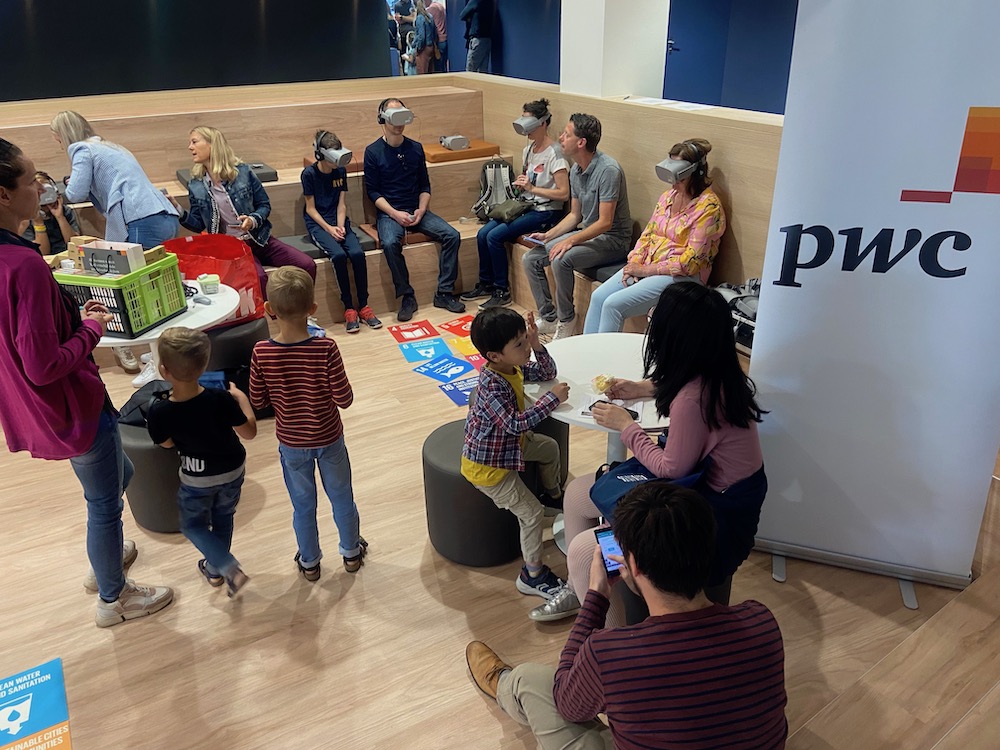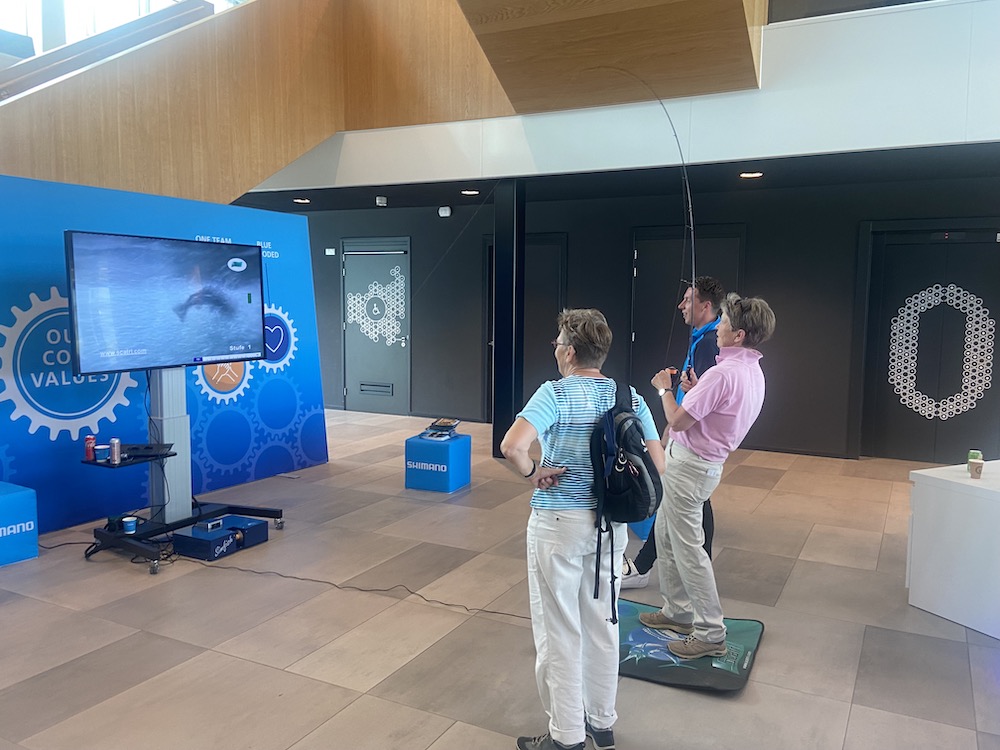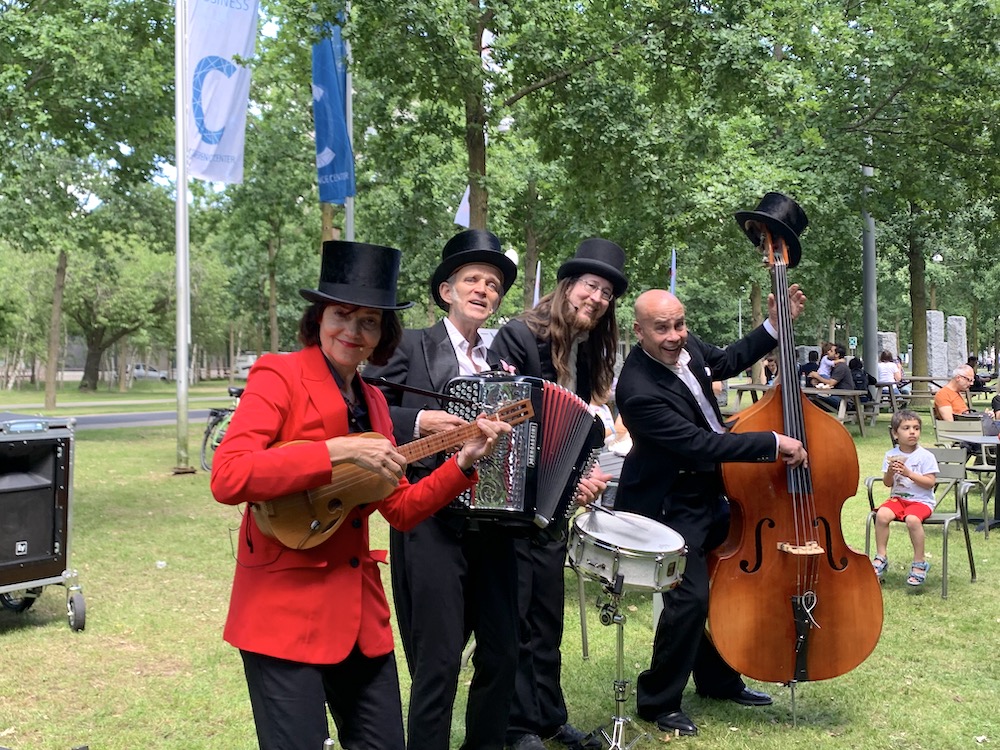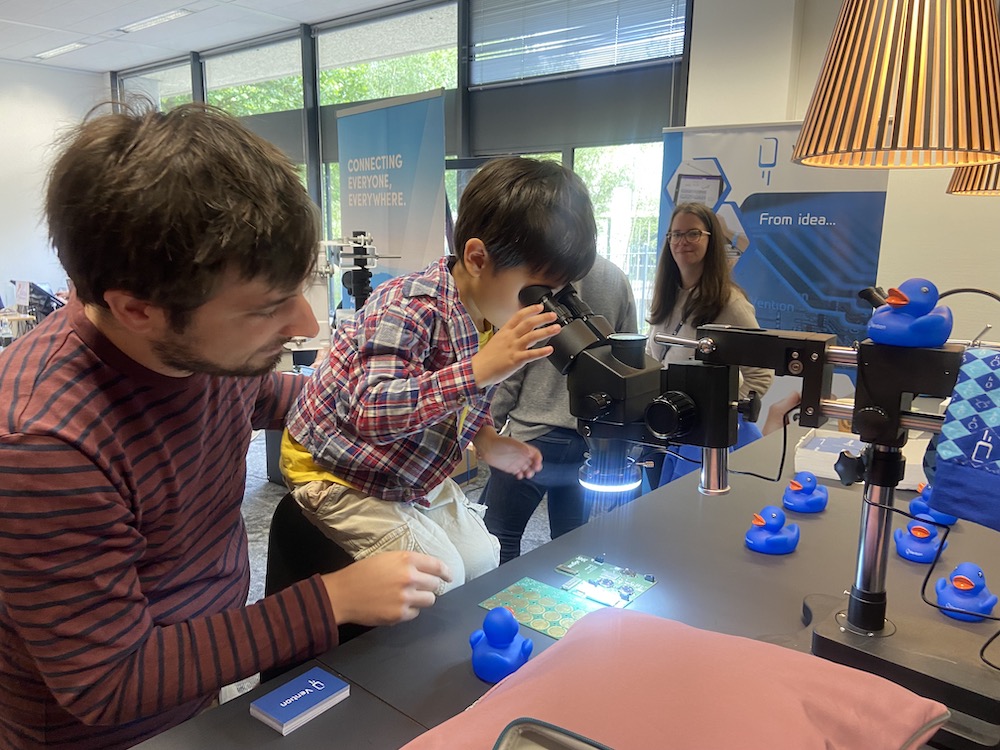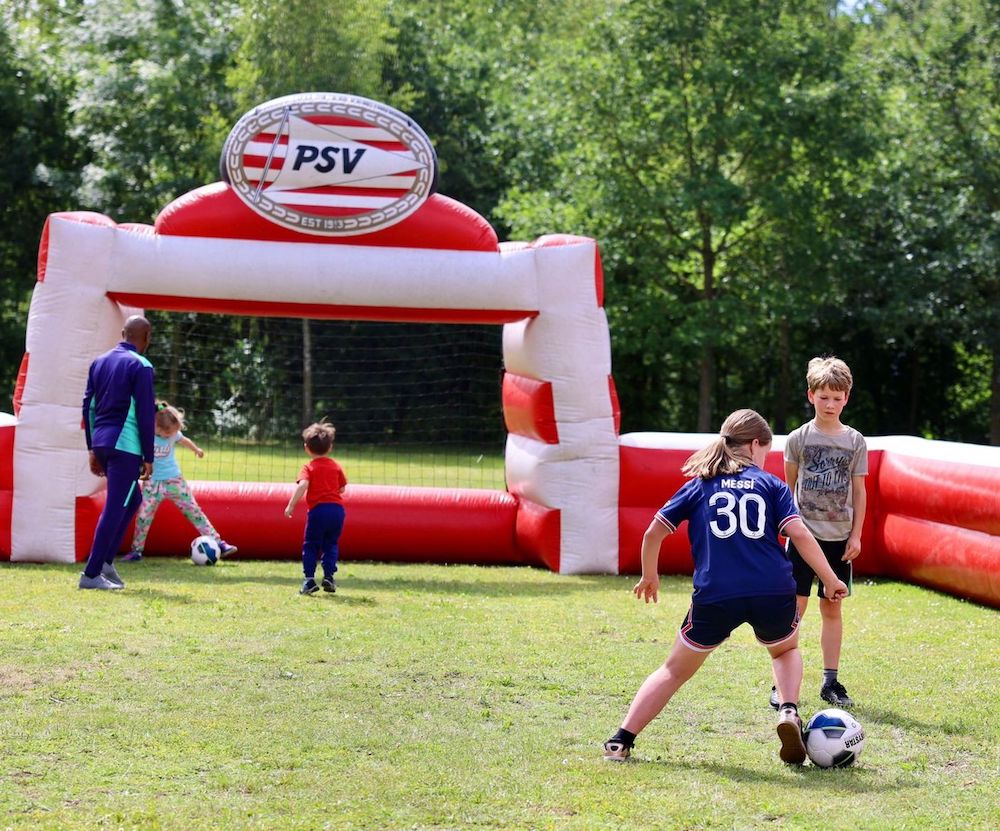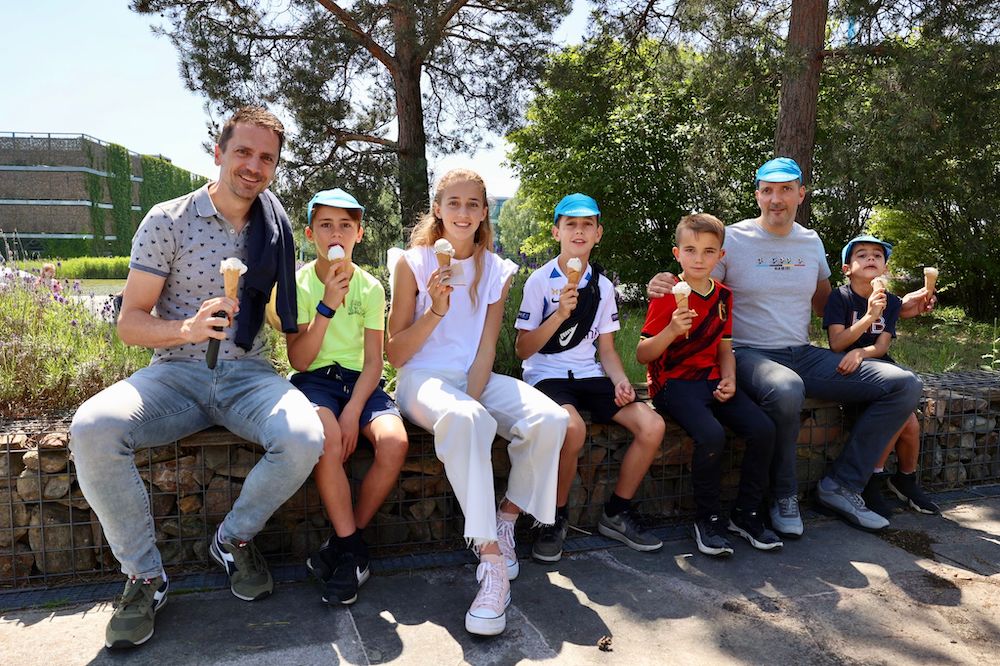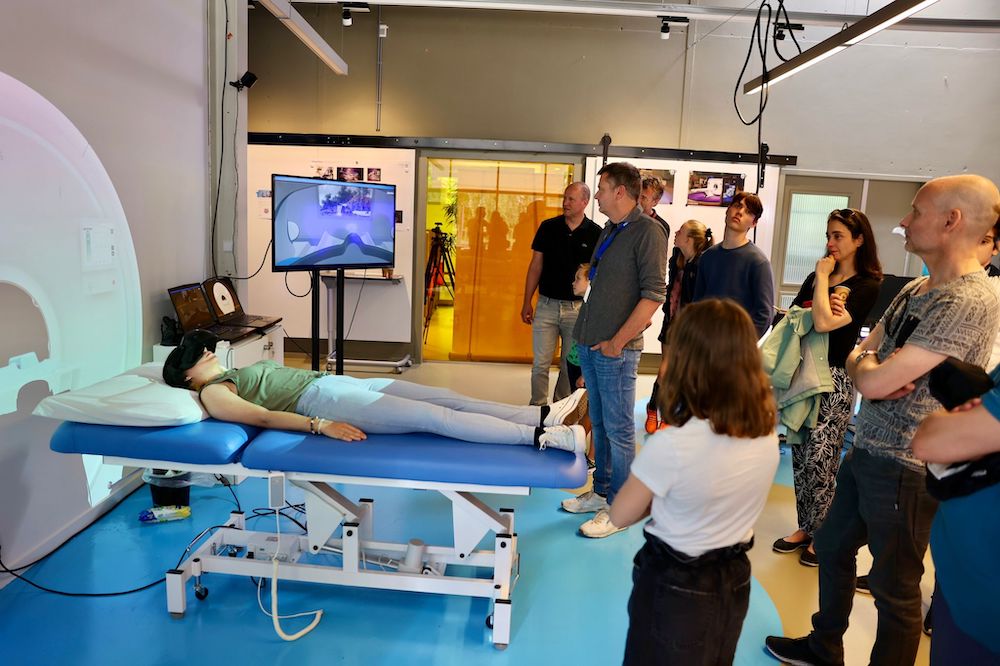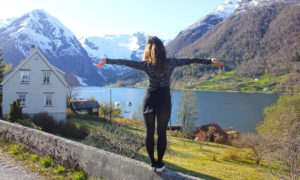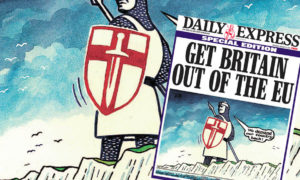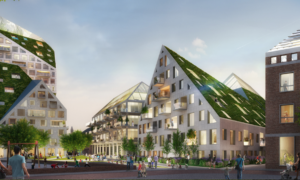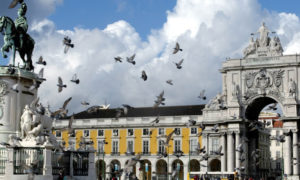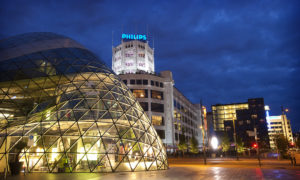(Editor’s note: This Eindhoven Business Briefing dedicated to Open Day is part of our Tech Tuesday series. Dispatches Europe tracks the tech scene – startups, scale-ups and mature companies – in our headquarters city of Eindhoven because so many of our highly skilled internationals are engineers, physicists and developers.)
Eindhoven is the deep-tech center of Europe. But on some days, it’s just a village, albeit a village full of really smart people incredibly comfortable with technology and innovation. A village where tech is synonymous with cool.
Open Day on High Tech Campus Eindhoven dazzled and entertained thousands of people to as they checked out demos, displays and activities from global tech companies such as NXP and Philips, as well as from startups working in exotic areas such as AI, free space optics and advanced laser printing.
Oh, and there was food, multiple music groups, including Bluegrass, and sports. So, it was kinda like an American county fair, just with lasers, self-driving car technology and robot dogs.
With clear skies and perfect June weather, people turned out to explore all corners of this one-square-kilometer R&D campus, the largest in Europe from the giant research facilities of Philips to the campus garden, with its flowers and beehives.
“The number of people exceeded our expectations,” HTCE Communications Manager Ingelou Stol said. “More than 7,500 people attended Open Day.”
A big portion of visitors were families, and there were dozens of displays and activities for kids ranging from virtual fishing (and real fishing in the campus lake) with Shimano employees to football clinics by PSV, the local club.
Big hits included
• the Startup Hub in the AI Innovation Center. Okay, Dispatches helped with this and we focus on startups. But if you’re a techie, it was cool to actually chat with founders and team members and get personalized demonstrations of the technology they’re working on. They included Robert van Tankeren at inPhocal, which has developed advanced laser printing; Thomas Slegers at Vention, which does rapid prototyping and Luis Oliveira and Betsy Lindsey of Aircision, which has developed a free space optics connection for 5G communications.
Axelera.AI had arguably the most popular booth with a fun AI program that turned your face into a cartoon.
All 10 teams set up really cool displays. We came away impressed that so much has happened here through pandemics and the vagaries of trying to get early-stage funding in Eindhoven.
• Philips, which had the latest healthcare technology on display … and really, really long lines to see it.
• NXP had tours and insights into their chip technology, as well as self-driving auto technology on display.
• Sporting equipment manufacturer Shimano had a variety of activities, such as virtual fishing and displays of the multi-thousand euro racing bicycles.
“It was a spectacular day,” Stol said. “After four years, we were finally able to invite thousands of people again to show what special technologies and innovations are created here.
“Open Day is back in 2024 and I can’t wait already!” Ingelou said.

Apple award
How many Eindhoven startups can say they impressed Apple? Strijp-S-based digital design studio Volst just won an Apple Design Award on 6 June at Apple’s World Wide Developer Conference 22 as the best app in the innovation category for their Odio app, which allows listeners to customize their sound environment through spatial audio.
The Apple Design Awards is the Oscar of the digital design world, an annual award ceremony for the most exceptional and influential apps in the App Store. The award recognizes breakthrough design as well as social impact and innovation. Odio won for the “Innovation” category.
Spatial audio turns a noisy room into an oasis of calm via a customizable, intuitive interface. Through dynamic head tracking, Odio users experience soundscapes as real spaces, according to Holst co-founder Roger Kemp, who just returned from California. Each soundscape is custom-composed by an artist from various genres. This ensures the right environment is tailored for every circumstance – working, resting during meditation and falling asleep, he said.
Volst team members created the Odio magic together with Joon Kwak from South Korea, a graduate of the Design Academy Eindhoven, and Max Frimout, a Dutch composer and audio producer.
About Volst: Volst is an Eindhoven product studio that designs and develops software applications for startups and consumer brands. It also develops its own products with the aim of creating immersive digital experiences, such as Odio.
Working hard, or hardly working?
Can we talk confidentially?
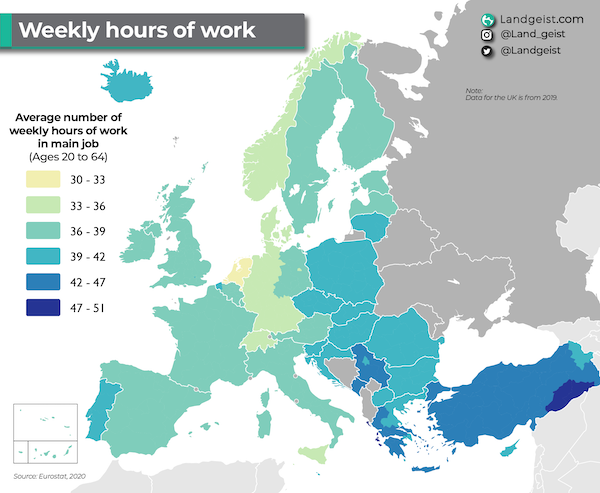
As friends?
For years, we’ve observed with bemusement the Dutch passion for free time and family time, and we get it. We Americans burn out because all we do is work. Moreover, we’re not Dutch, so it’s not for us to inject our weirdness into their culture. If the Dutch can work 32 hours per week and still rank in the Top 10 of wealthiest countries in Europe based on GDP per capita, good on them.
We’re peanut butter and jealous.
But in late May, de Volkskrant columnist Sander Schimmelpenninck posted a column asserting that “working as little as possible has become a national sport” for the Dutch. About the same time, British writer (‘Why The Dutch Are Different’) Ben Coates posted a graphic from Eurosat showing the Dutch work the fewest hours in Europe at between 30 and 32 hours per week.
Pieter Hein van Mulligen, chief of Centraal Bureau voor de Statistiek, says this reluctance to work is not helping companies starved for labor. There are 133 jobs for every 100 job hunters.
In our world, the startup world, we often hear Dutch teams say they’re taking off the summer, and they, of course, take off Fridays and every single religious holiday.
What, exactly, is Whit Monday, anyway?
Thirty-hour weeks are all good and well, but while the Dutch are soaking up sun on the Costa del Sol, the Americans are working 24/7. When we started our first digital media company in the U.S., we and all the startup teams we knew worked 24/7. No weekends off. No holidays. We just worked until we exited. Or died.
This head-down, unrelenting work explains why the United States dominates the list of the 100 most valuable tech companies in the world by market cap.
Wait … what?
Most of the money in the Dutch government’s fund to boost local innovation is being invested outside the Netherlands, according to a recent post by NRC.
Only 161 million euros out of the 500 million euros under management by Invest-NL have gone to Dutch companies, despite the fund’s stated purpose of financing innovative Dutch companies, NRC reports. This is especially puzzling to us considering how little early-stage funding there is for worthy Dutch startups. “The stipulation to support the Dutch economy with the fund was more of a ‘gentleman’s agreement’ than a hard-and-fast rule,” Invest-NL fund managers said.
As one wag asked on LinkedIn, “Since when do government funds operate on gentleman’s agreements?”
NL Times has a summary of the NRC post, which has a paywall.
Quick Hits:
Pitchbook has a detailed post on the UK/Ireland ecosystem with lots of graphics. About 13.5 billion euros have been invested across 1,456 deals in just the United Kingdom and the Republic of Ireland, according to PitchBook data.
Politico has an interview with Alex Rogers, president of Global Affairs and Technology Licensing at Qualcomm. In it, Rogers gives an upbeat interview about how Qualcomm sees Europe’s strengths, including 5G and Smart Transportation. It’s kind of fluffy but interesting.


